Speaker
Description
More than half of the territory of Latvia is covered with forests - 3.4 million ha. And forest areas still continue to increase due to the afforestation of abandoned agricultural, former mining areas, and also by natural forest growth. As a measure to increase the competitiveness of planted seedlings with forest environment vegetation and addition of lacking nutrient elements to improve growth conditions of trees forest soil fertilization may be used.
One of the most essential nutrients in a plant is nitrogen. As fertilizer nitrogen is typically introduced to the soil in the form of its inorganic salts (nitrates or ammonia salts). But some studies show that introducing nitrogen in a form of an organic compound, for example, in the form of amino acid - arginine (arGrow® Granulat, Arevo AB, Umeå, Sweden). Introducing nitrogen in the form of arginine benefits to improved growth and stress resistance, reduces environmental impact, and simplifies cultivation. It also reduces nitrogen leakage from the soil which leads to reduced use of fertilizers.
The experiment was carried out in four research sites - Vacciniosa mel. dry and drained mineral soil and Myrtillosa dry and drained mineral soil type forests. Carbon and nitrogen isotope ratio and elemental content in needle, branch, root, and soil samples from both fertilized and control plots were analyzed.
One of the methods to determine the effect of soil improver or fertilizer on a plant is to use isotopically marked nitrogen fertilizer together with the light-stable isotope ratio mass spectrometry (IRMS). IRMS (Elemental analyzer EA3000 coupled to Nu instruments mass spectrometer) was used for the determination of the N and C mass fraction and N and C isotope ratio. Inductively coupled plasma mass spectrometry (ICP-MS, Agilent 8900 ICPMS QQQ) was used for the determination of 16 micro- and macroelements in studied samples. Chemometric Agile Tool (CAT) together with statistical software program R was used for the evaluation and statistical treatment of obtained data.
The aim of this study was to evaluate the impact of the amino acid (arginine phosphate) containing fertilizer on changes in isotopic and elemental content in Scots pine (Pinus sylvestris L.) and Norway spruce (Picea abies (L.) H.Karst) in studied experimental plots.
After fertilization with an arginine phosphate-containing fertilizer, an increase in the mass fraction of nitrogen in spruce needles and a decrease in the value of nitrogen isotope ratio were observed. In the case of pine seedlings, such a pronounced trend was not observed, which lead to the conclusion that arginine phosphate was not the main source of nitrogen in pine needles. In the second growing season, no significant differences in the nitrogen isotope ratio were observed between fertilized and unfertilized pine samples, but changes in spruce were also observed in the second growing season.
Acknowledgement.Research is supported by the Latvian State forest projects No. 3. 5.5-5.1-000z-101-16-31 and No. 5-5.9.1_007n_101_21_77 and “Strengthening the doctoral capacity of the University of Latvia within the framework of the new doctoral model” with project identification No.8.2.2.0 / 20 / I / 006, LU registration No. ESS2021 / 434, co-financed by the European Social Fund.

